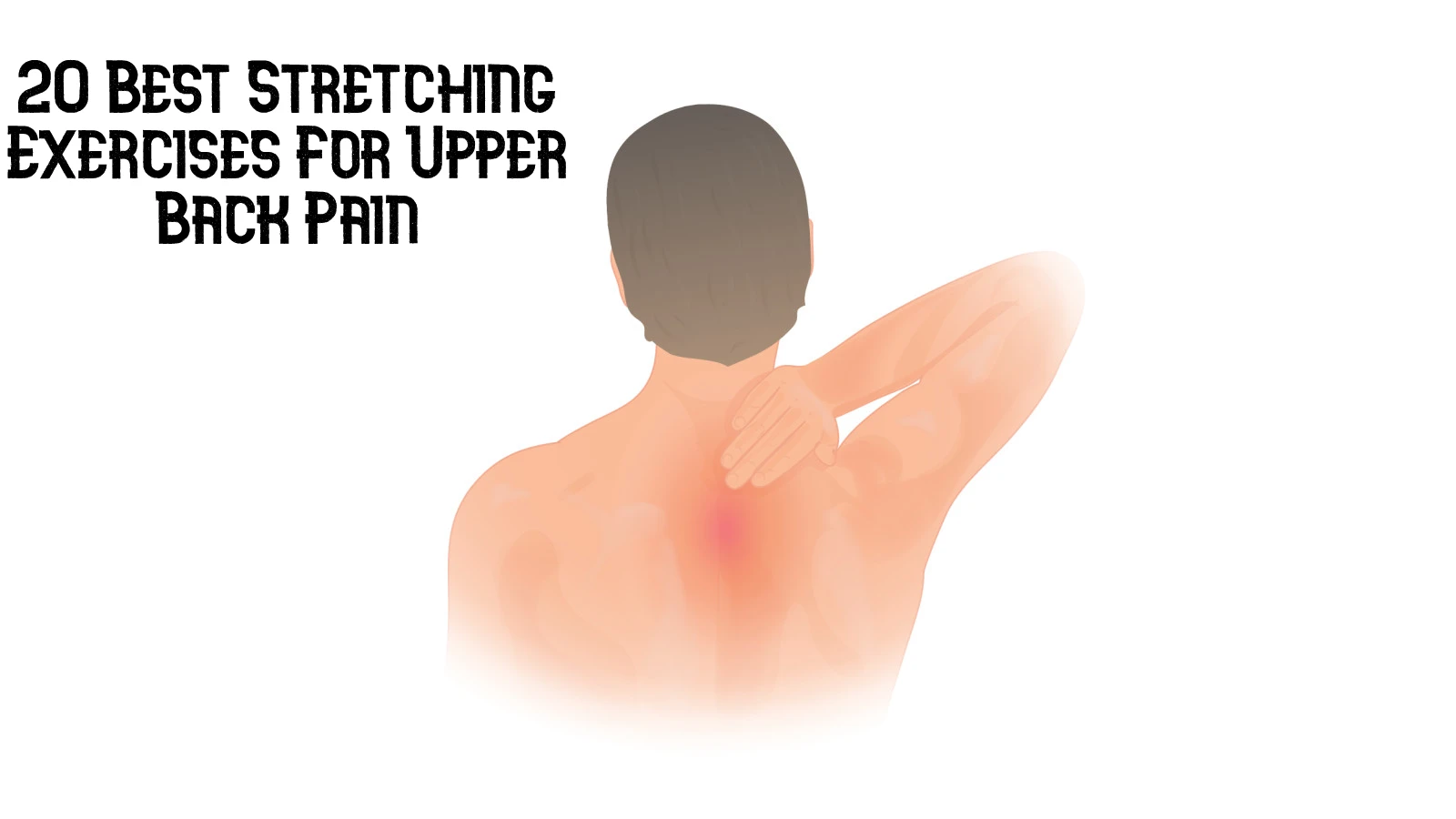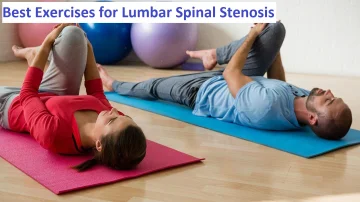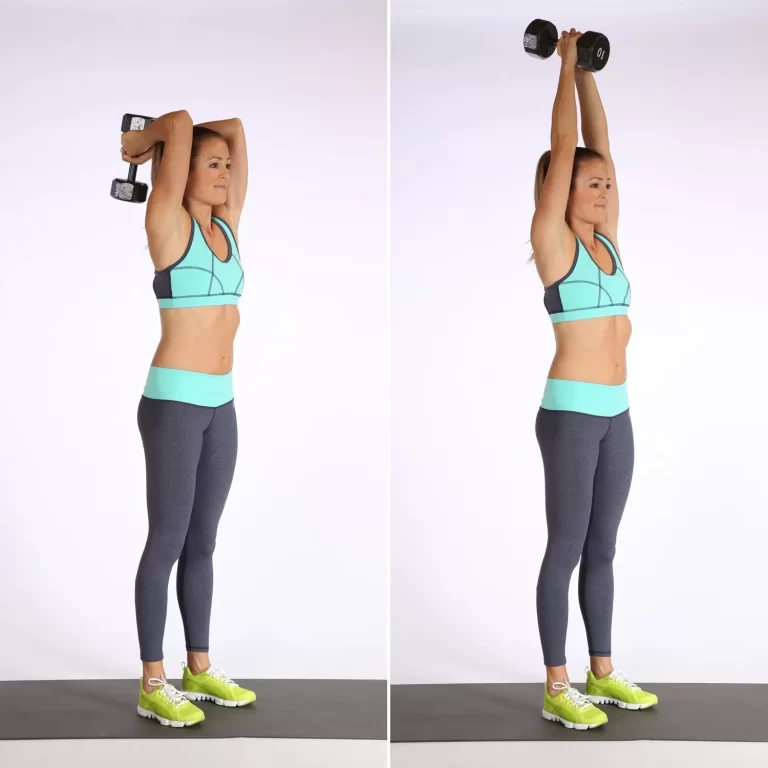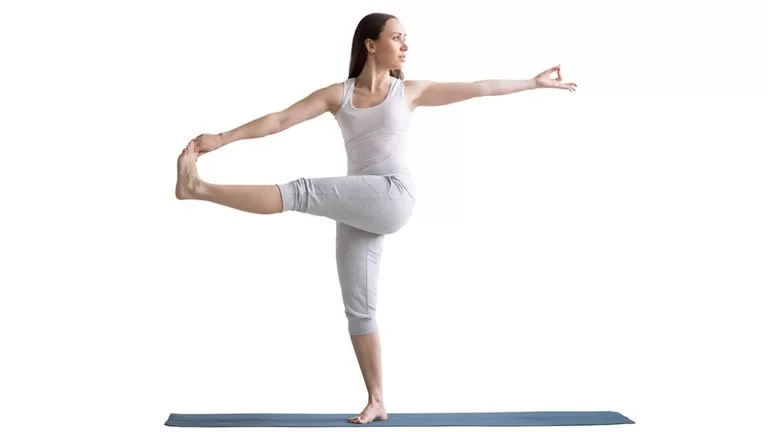20 Best Stretching Exercises For Upper Back Pain
Introduction
Stretching Exercises For Upper Back Pain
Combining dynamic stretches, strengthening exercises, and static stretches may help ease upper back pain. Gaining core strength could also be beneficial. Stretching and strengthening exercises can support your recovery regardless of the source of your pain, which could be anything from an injury to bending down over a smartphone to spending all day at a desk.
How a few back stretches at your desk can prevent pain: Exercises for easing and preventing upper back pain
- At some point in their life, 80% of people will have back discomfort, according to the American Chiropractic Association. It’s also among the most typical excuses for missing work.
- Furthermore, it goes beyond just people failing to lift with their knees. You might be contributing to the cause of your own discomfort in the future if you’re reading this while bent over your phone or sitting in front of your computer.
- Long stretches of sitting, which are common in today’s workplace setting, have been connected to poor circulation, neck strain, and poor posture.
- Fortunately, there isn’t much that has to be done to help stop possible issues from happening.
- Your regular work routine should include periodic stretching of the rhomboid and trapezius (or “traps”) muscles as well as the arms and upper back.
- The secret is to select a few simple exercises that you can perform at your desk without difficulty and stick with them.
- These four easy stretches for your upper back muscles can be performed at the kitchen table, in the office, or even when traveling by plane.
- Stretching exercises for the upper back can help reduce discomfort and release tense muscles. These consist of workouts that one may perform at home or even at work.
- Tension and upper back discomfort are frequent complaints, especially in those who are stressed or spend a lot of time Bending over.
- This article provides advice on warming up to avoid injury as well as a list of exercises that can relieve upper back discomfort. It also offers guidance on when to visit a physician.
How to become comfortable
- First things first: Perform mobility exercises as part of a dynamic warm-up to loosen up the muscles in your trouble area.
- A 5 to 10-minute aerobic warm-up, such as walking, cycling, or brisk jogging, may also be beneficial.
- Warm up before stretching or working out to reduce the risk of injury and increase the efficiency of any activity.
- Although static stretches, which include holding a stretch for an extended period, aid in restoring and maintaining flexibility and enhancing range of motion, they are best used as a post-workout warm-up or in combination with a more dynamic warm-up regimen.
- This is due to the possibility that extended static stretching (particularly for 60 seconds or longer) could briefly impair your muscle strength and endurance, response speed, and general performance.
- If you do decide to incorporate static stretches into your warmup, try to limit them to no more than 10 to 20 seconds. If not, hold off until after your workout is over.
You should warm up your muscles, ligaments, and joints for the exercise before you begin. You can therefore warm up by including some dynamic stretching.
- Dynamic stretches
- Cardiovascular activity
- Workouts tailored to a particular activity
- Brief static stretches
Get the instructions for a 6-minute warm-up program below. If someone wants to prolong it for a longer warm-up, they can.
Step 1: Start a 3-minute march right away.
- Start by pumping your arms up and down in time with the footsteps while you march in place.
- Maintain your hands relaxed while your elbows are bent.
Step 2: Sixty-six heel digs in sixty seconds
To sink your heels:
- With your left leg slightly bent, take a straight stance.
- With the toes pointed upward and the heel on the ground, place the right foot in front of the torso.
- Extend both arms in front of the body simultaneously.
- Go back to where you were before.
- Continue on the opposite side.
Step 3: (30 lifts in 30 seconds of knee lifts)
To elevate one’s knee:
- Maintain a straight back and a stiff abdominal region.
- With the right knee raised to meet the left hand, budge the left leg slightly.
- Go back to where you were before.
- Continue on the opposite side.
Step 4: Roll your shoulders twice, for ten repetitions.
To roll your shoulders:
- March still, keeping your arms straight at your sides.
- Five times, roll your shoulders forward.
- Five times, roll the shoulders back.
Step 5: (10 repetitions of knee bends)
To bend your knees:
- Place your feet shoulder-width apart and hold your arms out in front of you.
- As you lower your body to a comfortable posture, slowly bend at the knees.
- Ascend gradually to the beginning position.
- Ten times over, repeat this.
20 Best Upper Back Exercises
Numerous exercises can help reduce shoulder, neck, and back discomfort. Maintaining range of motion and preventing repetition in the routine may both be achieved by switching up the tasks. These exercises might be beneficial:
- Walking
- swimming
- yoga
- Pilates
- low-impact aerobic workouts
The stretches shown below might aid in the prevention and relief of upper back discomfort.
Dynamic stretching
They extend the range of motion of the muscles and joints. Below are some dynamic stretches that may help ease and avoid upper back pain.
Rotation of the trunk
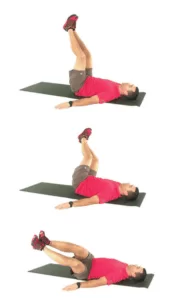
Steps To Follow:
- With your feet flat and your knees bent, lie on your back.
- Rotate your knees slightly to the right while maintaining their bent position.
- For a short while, maintain this stance.
- Bring the knees back to the middle.
- Stretch both sides many times more.
Arm reach overhead

Steps To Follow:
- Start either standing or sitting.
- Raise your arms over your head.
- While maintaining both arms extended high, slant to the right. Pull the left arm gently to the right with your right hand to deepen the stretch.
- Go back to where you were before.
- Stretch both sides many times more.
Cat-Cow Pose
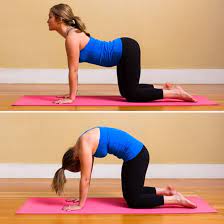
Steps To Follow:
- Start off on all fours.
- The knees should be squarely beneath the hips, and the hands should be under the shoulders. This is the table pose.
- Arc your back slowly upward, bringing your head down to your chest and pressing through your shoulders. This is the cat pose
- Hold it for a short while, then let go.
- To return to the beginning posture while keeping your lower back down toward the ground.
- The chin and nose should point upward when the head is gently moved back. The cow pose is this.
- Hold it for a short while, then let go.
Knee to chest

Steps To Follow:
- Start by lying down on your back.
- Raising the legs gently, bend the knees, and bring the legs to the chest.
- For a breath, bring the knees to the chest, then release the pressure and let the feet drop back to the ground.
- Repeat as many times as required.
Desk stretches
- These are simple tasks to complete at a desk or in an office. Here are a few instances.
Wall stretch
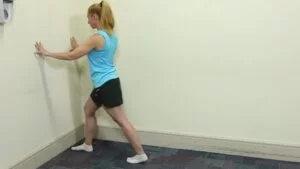
Steps To Follow:
- Position yourself such that your right side is facing a wall.
- With the forearm up against the wall, flex the right arm at the elbow.
- For the elbow to form a 90-degree angle, the upper arm must be perfectly straight.
- Stretch your right shoulder and upper back by taking a gentle stride forward with your right foot and twisting to the left.
- After a few seconds of holding the stretch, go back to your starting posture.
- Stretch both sides several times more.
Neck flexion
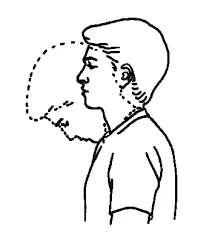
Steps To Follow:
- Either sit or stand erect.
- Drop the chin to the chest gently, stopping if you experience any pain or discomfort.
- Turn your head till your right ear is in close proximity to your right shoulder. Keep your posture like this for a short while.
- Maintaining a downward chin, gradually turn your head back until your left ear is in close proximity to your left shoulder. Keep your posture like this for a short while.
- Repeat this moderate head movement from shoulder to shoulder a few times. Anytime you feel any tension in your muscles, pause and lengthen the stretch.
Shoulder roll
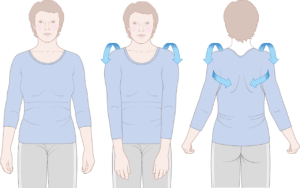
Steps To Follow:
- With your arms relaxed by your sides, take a straight stance or sit up.
- Roll the shoulders forward gently, raising and lowering them in a circular motion.
- Keep going for around thirty seconds.
- Carry out the other direction shoulder roll again.
Static stretches
- When a person reaches the end of their range of motion, they can hold controlled, continuous stretches. Static stretches are typically used after working exercise, but they can also be a part of a warm-up regimen. Here are a few instances.
Thoracic extension

For this practice, one requires a foam roller or yoga block.
Steps To Follow:
- Take a seat on the ground.
- Lay the block or roller behind your body on the floor, then slowly recline so that it supports your upper back.
- With the hands holding the head and neck from behind, the buttocks should be on the ground.
- Bend the torso backward and raise the arms above the head for a deeper stretch.
- Breathe deeply a few times, then release the tension in your shoulders and back.
- Do the exercise multiple times.
Strengthening exercises
It’s essential to strengthen your neck, shoulder, and back muscles in order to lessen and avoid pain. To target them, pick a few of the movements listed below.
While some of these exercises employ resistance bands or dumbbells, others only call for your body weight. If at all possible, combine the two varieties.
Row
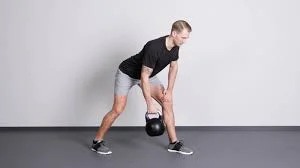
Good for: upper back
Steps To Follow:
- To finish this exercise, use a light to medium dumbbell or a resistance band.
- Attach the resistance band to a pole or other sturdy object, then reach out and grasp each handle.
- Bend your elbows and pull the grips straight back, keeping them close to your body.
- Your lats ought to be engaging.
- Holding the dumbbell in your right hand, place your left hand on a wall and extend your arm to brace yourself.
- Turn your waist to a 45-degree angle so that the dumbbell hangs loosely.
- With your elbow tucked in, lift the dumbbell straight up while maintaining a neutral neck and soft knees.
- Perform 8–12 repetitions in 2-3 sets.
Face pull
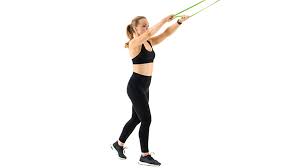
Good for: shoulders and upper back
Steps To Follow:
- Use a resistance band to accomplish this movement.
- Attach the band to a sturdy object higher than your eyes.
- Using an overhand grip, grab each handle.
- Squeeze your shoulders together and extend your upper arms out to the sides as you pull straight toward your face. Stop, then take a step back to where you were before.
- Finish three sets of twelve repetitions.
Scapular squeeze
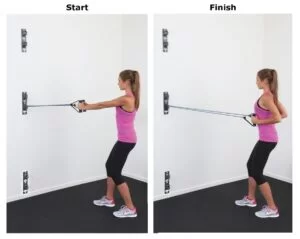
Good for: shoulders and upper back
- Squeeze your shoulder bones together while standing with your arms at your sides.
- Five seconds of holding, then release.
- Three to five times over.
Wall angel

Good for: neck, shoulders, and upper back
Steps To Follow:
- Place your back flat against a wall while standing. To fully let your back soften against the wall, you might need to slightly spread your feet.
- Bend your elbows to form 90-degree angles after extending your arms to form a “T” shape against the wall.
- Make sure your arms remain flat on the wall as you slowly raise and lower them in a “snow angel” motion.
- Go back to where you were when your fingertips touched your head.
- Do three sets of ten repetitions.
Reverse dumbbell fly
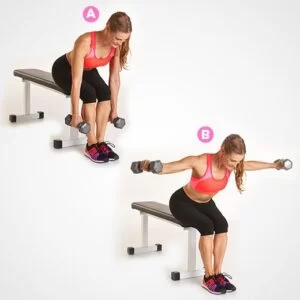
Good for: shoulders and upper back
Steps To Follow:
- With your arms hanging straight down and your waist turned to a 45-degree angle, grab two light dumbbells and stand.
- Lift your arms up and out to the sides while maintaining a neutral neck position and a downward look.
- When the exercise reaches its peak, tense your shoulders together.
- Finish 3 sets of 8–12 repetitions.
Lat pulldown
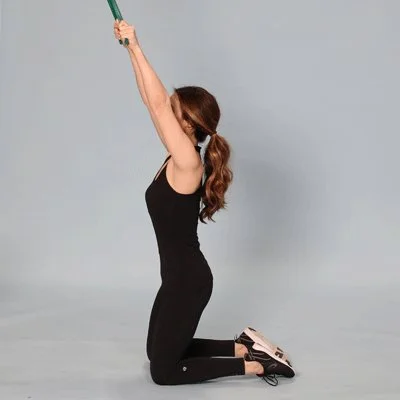
Good for: shoulders and upper back
Steps To Follow:
- Under a resistance band fastened to a sturdy surface above, take a seat or stand.
- When your upper arms are parallel to the floor, pull down on the band.
- Squeeze your lats as you pause at the bottom, then go back to the beginning position.
- Finish 3 sets of 8–12 repetitions.
Superman
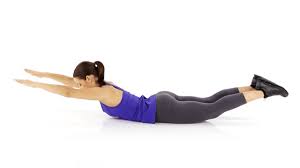
Good for: mid and lower back
Steps To Follow:
- Stretch your arms above your head while lying on your stomach.
- Elevate both your arms and legs off the ground simultaneously, maintaining a neutral neck position.
- Make sure your lifting is done using your glutes and back.
- At the summit, pause for a short while before going back to the beginning.
- Perform three sets of ten repetitions for the Superman exercise.
Pec stretch

Good for: chests and shoulders
Steps To Follow:
- For this section, a doorway will be necessary.
- Put your forearms on the doorframe as you step into the entryway.
- Ensure that your elbows are 90 degrees bent.
- Feel the stretch in your shoulders and chest as you allow a small amount of your body weight to drop forward.
- Ten seconds of holding, then release.
- Do this three times.
Child’s Pose

Excellent for: shoulders; middle, lower, and upper back
Steps To Follow:
- Begin on all fours on the floor.
- With your big toes touching, widen your knees as far apart as they’ll go and sit your glutes back onto your feet.
- Arrange your arms over your head and sit upright.
- Hinge at the waist and lower your upper body forward between your legs during your subsequent exhale.
- Let your shoulders drop, your forehead comes in contact with the floor, and your glutes retract.
- For at least fifteen seconds, hold.
Butterfly
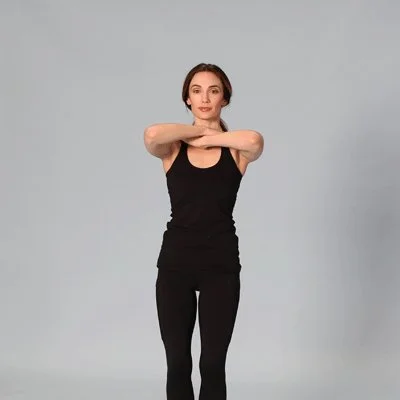
Good for: shoulders and upper back
Steps To Follow:
- Put your elbows together until they touch, then place your palms on the opposing shoulders.
- Hold for ten to twenty seconds, then let go.
- 3–to 5 more times, repeat.
Stretching the upper trapezius
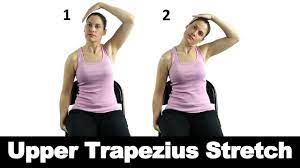
Beneficial for: neck and upper back
Steps To Follow:
- While standing erect or sitting on a chair, take your right hand and place it on the back of your head.
- Put your left hand behind your back gently.
- Pull your head gently in the direction of your right shoulder using your right hand.
- For 10 to 15 seconds, hold this.
- Continue on the opposite side.
Levator scapulae mobilization
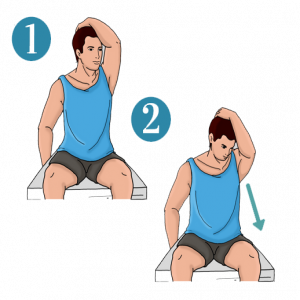
Beneficial for upper back and neck
Steps To Follow:
- Make a 45-degree turn with your neck to the left while sitting or standing upright.
- With your neck bent, glance down as if you were peering inside a shirt pocket. For a longer reach, you can utilize your left hand.
- For 10 to 15 seconds, hold this.
- Continue on the opposite side.
When will the pain stop?
- The length of pain will mostly depend on the nature of the damage and the underlying source of the issue, whether you’re dealing with a little ache or an acute injury.
- Generally, when your muscles strengthen and your injury heals, you can notice benefits in a few weeks or months.
- But each person’s road to recovery will be unique. It may be helpful in certain situations to consult a personal trainer for advice and a customized workout plan.
- You should see a doctor and refrain from beginning any new activities if you have painful neck or back discomfort.
After an injury, when should I start exercising?
- Resuming exercise too soon might increase an injury and slow the healing process. It’s crucial to let your injury heal before gradually getting back to your regular activities.
- Exercise should be avoided until your pain, stiffness, and swelling have decreased.
- When you have a complete or nearly full range of motion and can carry out daily activities and household tasks with little to no pain, that’s a good indicator.
- It’s advisable to see a healthcare provider before beginning any fitness regimen if you’re unsure.
What else should I do?
While back and neck workouts are crucial, you should also incorporate a range of strengthening exercises into your program for a well-rounded fitness regimen. Stronger cores have been associated with less lower back discomfort in particular because they help to stabilize the spine. The following muscles are part of the core:
- Erector spinae
- Transversus abdominis
- Rectus abdominis
- Internal and external obliques
- Multifidus
Numerous studies have connected lower back pain relief with core-strengthening exercise regimens.
Other professional or at-home therapies including heat therapy (heat packs, hot baths, etc.), whole-body stretching, over-the-counter pain relievers like Voltaren or ibuprofen, massage therapy, and acupuncture may also be beneficial.
Lastly, if you work at a desk, attempt to arrange your workspace comfortably to reduce pressure and pain in your back and neck.
When to call a physician
- Pain in the upper back can go away on its own or can go away with rest and a little stretching.
- See a physician, though, if the discomfort is severe or continues.
- The physician will investigate to ascertain the reason and suggest suitable courses of action.
Conclusion
Pain in the upper back is normal and typically not a reason for alarm. Stretching gently can often help reduce it. It’s crucial to warm up before stretching. This aids in preventing damage to the connective tissues and muscles.
A six-minute warm-up should include a variety of exercises such as shoulder rolls, knee lifts, and on-the-spot marches. If your back discomfort is severe or persistent and does not get better with frequent stretches, see a doctor. Additionally, get in touch with a medical expert if the pain is accompanied by other worrisome signs.
FAQs
How can upper back pain be relieved?
With a foam roller under your upper back and your hands behind your head, lie on your back. Roll slowly up and down, starting from your mid-back and working your way up to your shoulders. Roll with your legs while maintaining a tight core. Roll gently and slowly; don’t rush.
What reduces discomfort in the upper back?
Most people with upper and middle back pain can manage their symptoms at home, and that includes you. Your illness might be sufficiently alleviated by cold packs, heat, or over-the-counter painkillers. However, if your discomfort starts to interfere with your everyday activities or becomes too severe, you should contact your doctor.
How can I tell whether the discomfort in my upper back is severe?
You need to get medical attention if the pain persists for more than a few days or if you need to use painkillers on a daily basis. Upper back discomfort is a severe concern if it prevents you from moving or functioning normally, prevents you from going to work, or confines you to bed.
Which sitting posture is ideal for people with upper back pain?
Preventing Neck and Back Pain When Sitting. To start, take a comfortable seat as close to your desk as you can, keeping your upper arms parallel to your spine. Relax both of your hands on your work surface (e.g. desktop, computer keyboard). If your elbows are not at a 90-degree angle, shift your chair either up or down.
References
- Davis, N. (2023, January 18). 19 Exercises to Relieve Upper Back Pain, Neck Pain, and More. Healthline. https://www.healthline.com/health/fitness-exercise/upper-back-pain-exercises#1
- Galan, N. (2023, December 6). Exercises for easing and preventing upper back pain. https://www.medicalnewstoday.com/articles/325373
- Evans, R. (2019, March 21). Deskercize: Upper Back Stretches. Healthline. https://www.healthline.com/health/back-pain/deskercize-upper-back

